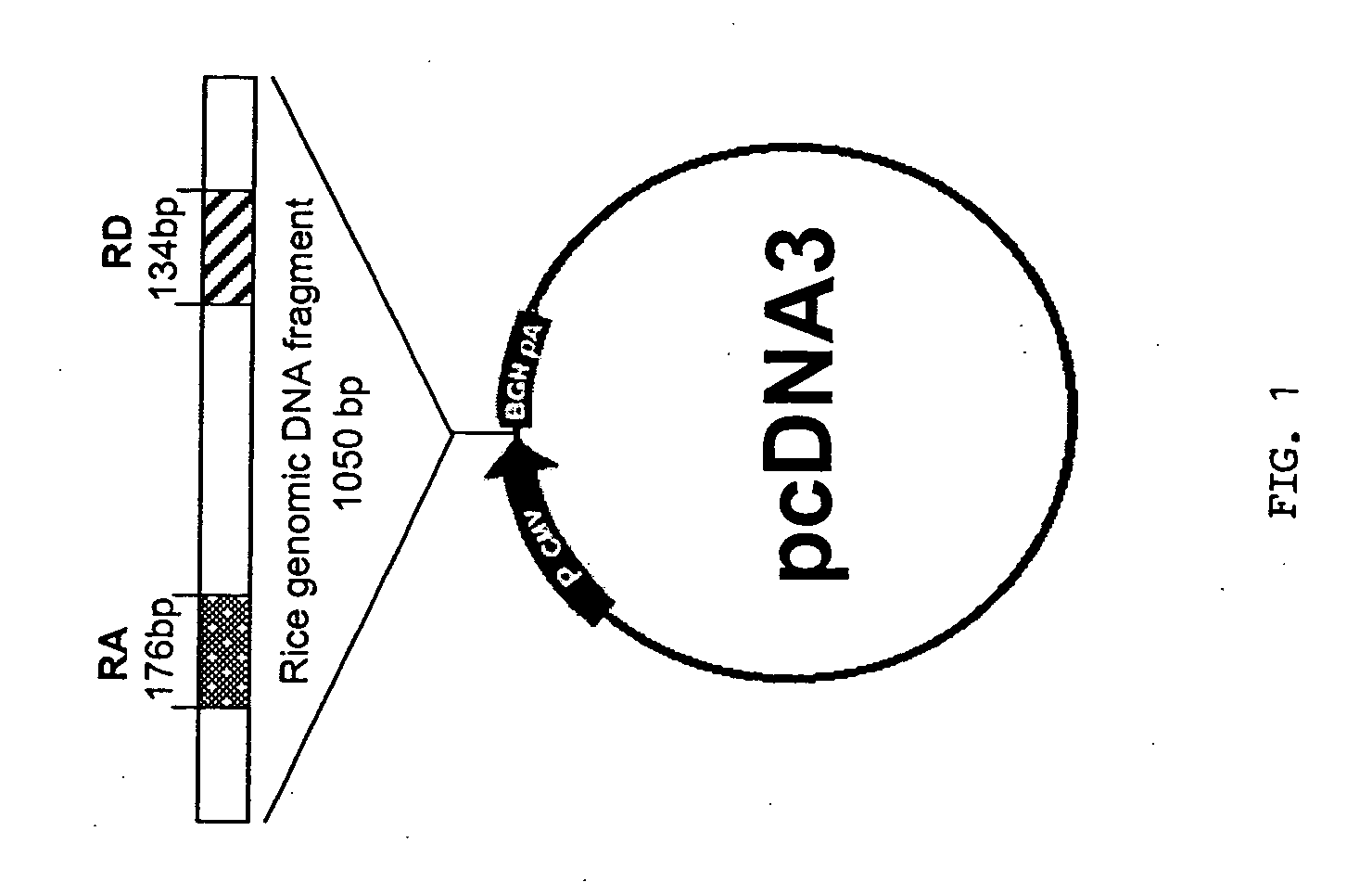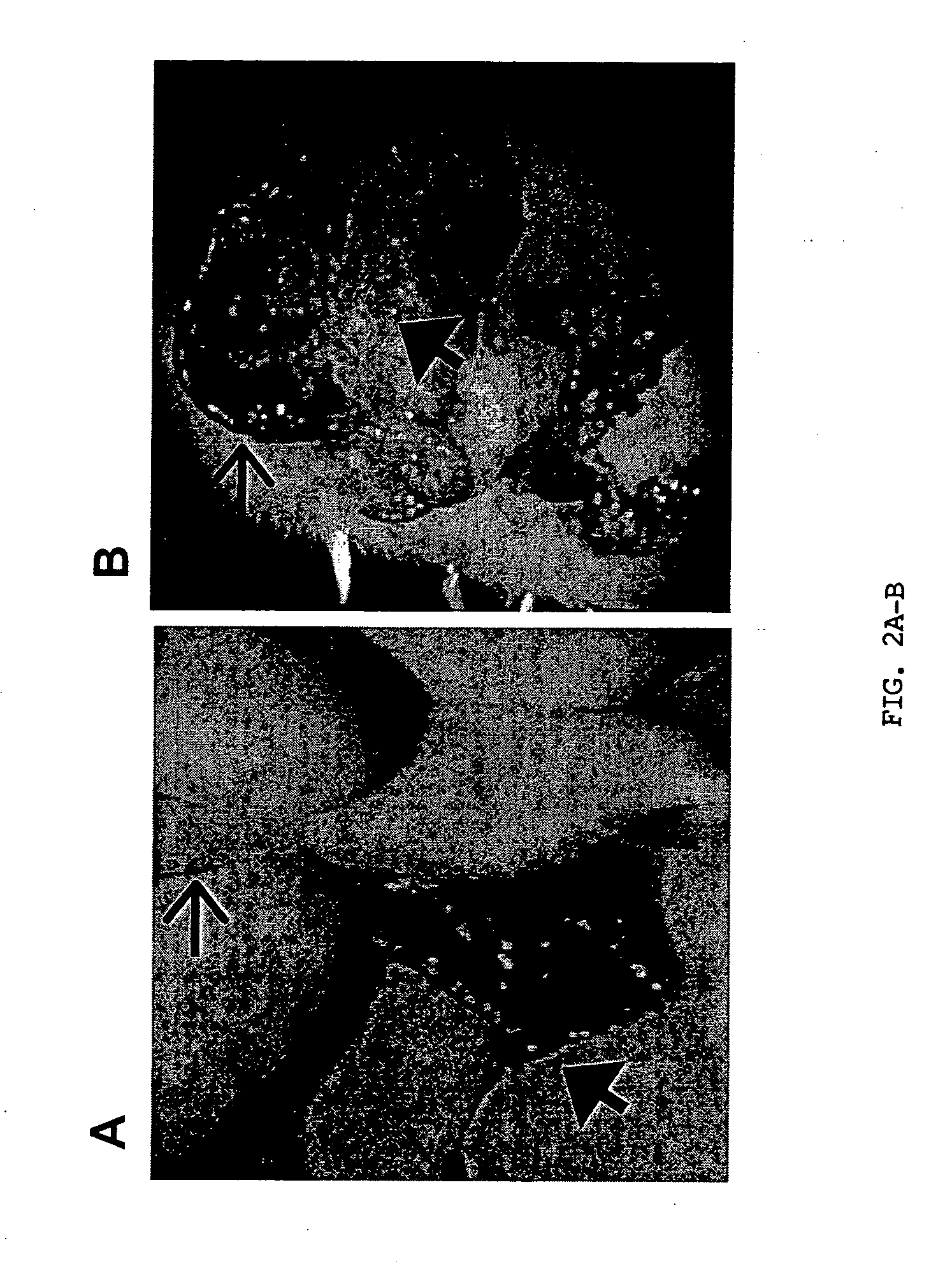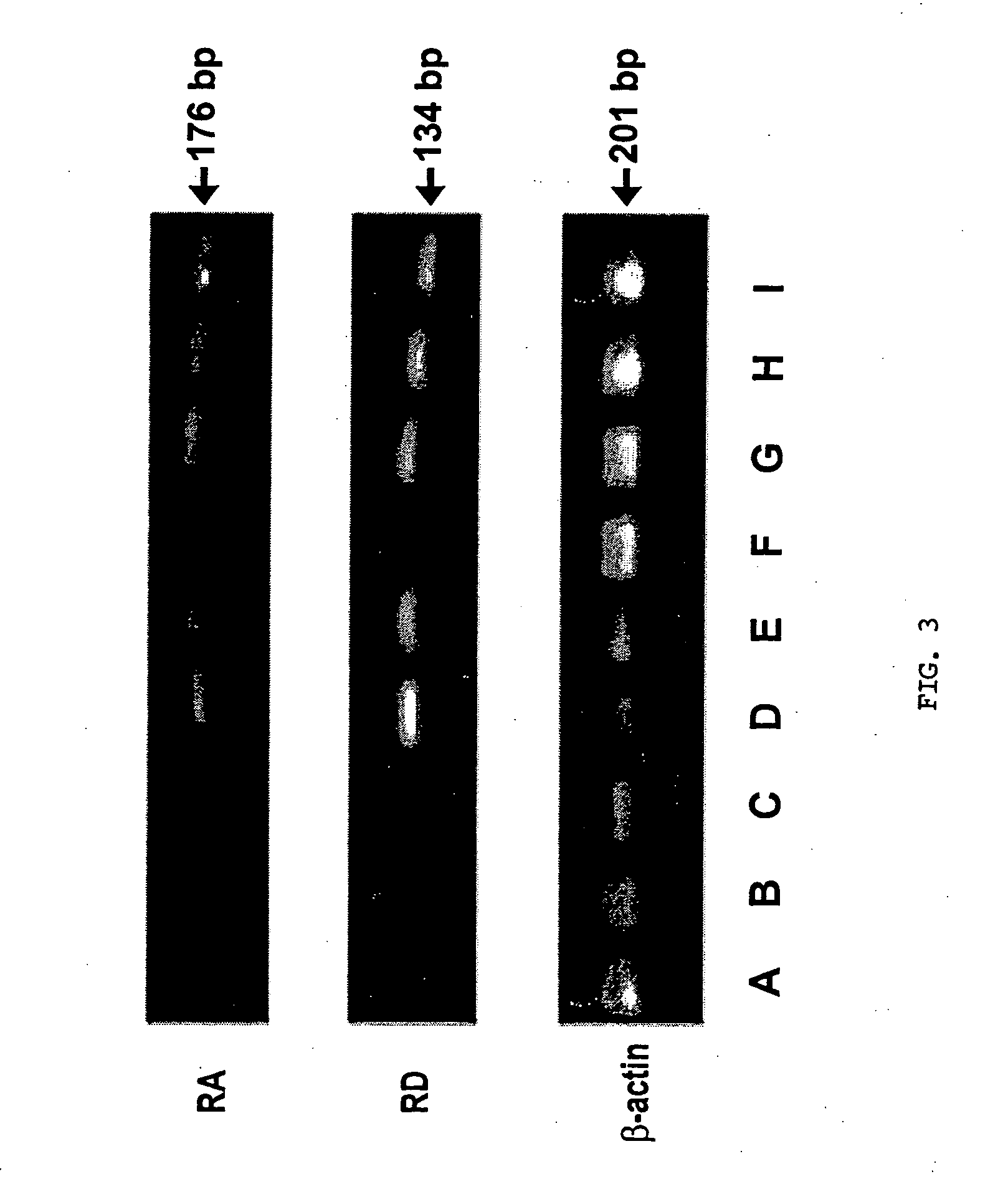Molecular lymphatic mapping of sentinel lymph nodes
a lymph node and lymph node technology, applied in the field of chemotherapy, histopathology and cancer, can solve the problem that human subjects may be at risk of cancer
- Summary
- Abstract
- Description
- Claims
- Application Information
AI Technical Summary
Benefits of technology
Problems solved by technology
Method used
Image
Examples
example 1
Materials and Methods
[0274] Rice Gene Construction. Rice genomic DNA of Olyza Sativa encoding a cytoplasmic male sterility peptide in the mitochondria was chosen as the molecular identification marker. The rice gene library cloned in EMBL3 SP6 / T7 (host strain K802) was purchased from Clonetech (Palo Alto, Calif.). A 1050 bp fragment from the rice gene genomic library was amplified by PCR primers: sense-5′CATAAG CCATCCGAAACCAGTA 3′ (SEQ ID NO:1) and antisense-5′ AATAGCATAGTCCAAGCGAACC 3′ (SEQ ID NO:2). The PCR product was isolated by gel electrophoresis and then cloned into the pcDNA3 plasmid (InVitrogen, La Jolla, Calif.) (FIG. 1). The plasmid was subsequently transfected into E. coli and expanded as previously described (Okamoto et al., 1997). Large amount of plasmid was isolated and purified by QiaAmp (Qiagen Inc., Valencia, Calif.). The purified 5.6-kb plasmid DNA was used for MLM. The linear 1050 bp rice gene fragment was obtained either by digestion of the rice gene fragment c...
example 2
Results
[0280] Rice gene marker. In designing a marker for MLM, the following criteria are desired of the DNA marker: sufficient size to withstand degradation, ability to efficiently flow into the lymph node during MLM, and a unique sequence with no significant homology to known human or rat gene sequences. The GenBank data base search (Internet) verified that there was no significant homology between Olyza sativa (rice) genomic DNA to known human or rat genes. A 1050 bp DNA fragment was selected from the mitochondrial membrane glycoprotein from exon II to V in the rice gene and cloned into pCDNA3 plasmid (FIG. 1).
[0281] The PCR primers were designed to obtain the highest efficacy in detection of the rice gene marker in frozen or paraffin-embedded tissue sections. Five different primer sets were initially developed for PCR detection of the rice DNA in the SLN after MLM. By having more than one set of primers covering different regions of the DNA, we were able to circumvent the pote...
PUM
| Property | Measurement | Unit |
|---|---|---|
| Mass | aaaaa | aaaaa |
| Mass | aaaaa | aaaaa |
| Mass | aaaaa | aaaaa |
Abstract
Description
Claims
Application Information
 Login to View More
Login to View More - R&D
- Intellectual Property
- Life Sciences
- Materials
- Tech Scout
- Unparalleled Data Quality
- Higher Quality Content
- 60% Fewer Hallucinations
Browse by: Latest US Patents, China's latest patents, Technical Efficacy Thesaurus, Application Domain, Technology Topic, Popular Technical Reports.
© 2025 PatSnap. All rights reserved.Legal|Privacy policy|Modern Slavery Act Transparency Statement|Sitemap|About US| Contact US: help@patsnap.com



